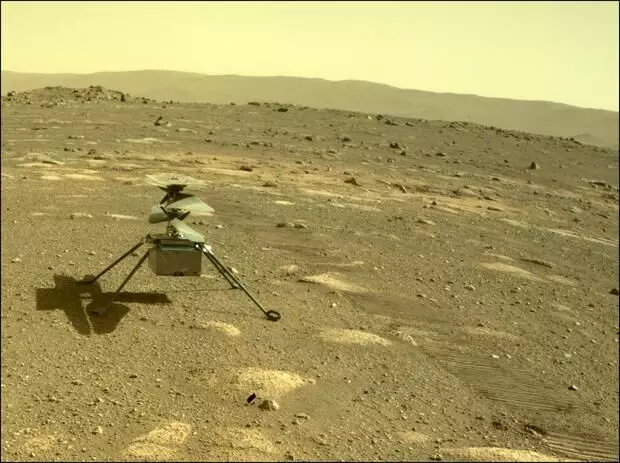
NASA's Mars helicopter Ingenuity touches down on the Red Planet
text_fieldsNASA on Saturday officially confirmed the safe delivery of Martian helicopter Ingenuity on the Red planet after being dropped by its mother ship, the Perseverance rover.
The helicopter, while being attached to the NASA Perseverance rover, touched down on Mars on February 18.
"#MarsHelicopter touchdown confirmed! Its 293 million miles (471 million km) journey aboard @NASAPersevere ended with the final drop of 4 inches (10 cm) from the rover's belly to the surface of Mars today," officials with NASA's Jet Propulsion Laboratory in Pasadena, California, wrote in a Twitter announcement. "Next milestone? Survive the night."
Weighing around 1.8 kgs, Ingenuity is a tiny, solar-powered helicopter that relies on a rechargeable battery to keep its systems warm during the harsh Martian night. The scientist was concerned about its ability to survive the temperatures in Martian night, which could go as low as minus-130 degrees Fahrenheit. It has been connected to the rover, using its heater to stay warm, but now it is using its internal battery to power a vital heater.
In its first flight, the rover will rise a few feet from the ground for 20-30 seconds and then land back. Similar to a baby bird learning to fly, the scientists in a month plan to do four other tests on the helicopter to slowly push its limits of distance and altitude.
Before the first flight, this series of tests will fire up Ingenuity's four-rotor blades that spin up to 2,537 revolutions per minute. To document its flight, there are two cameras on Ingenuity that the rover will observe.
Though scientists have tried several rovers on Mars for years, this is their first-ever attempt to send a helicopter to another world designed to test technologies for future flying vehicles on other planets. The American agency aims to explore the planet's surface with the help of Ingenuity, and the helicopter is expected to make its first flight on April 11.
If successful, the drones could become standard equipment for future planetary exploration, said the scientists.























